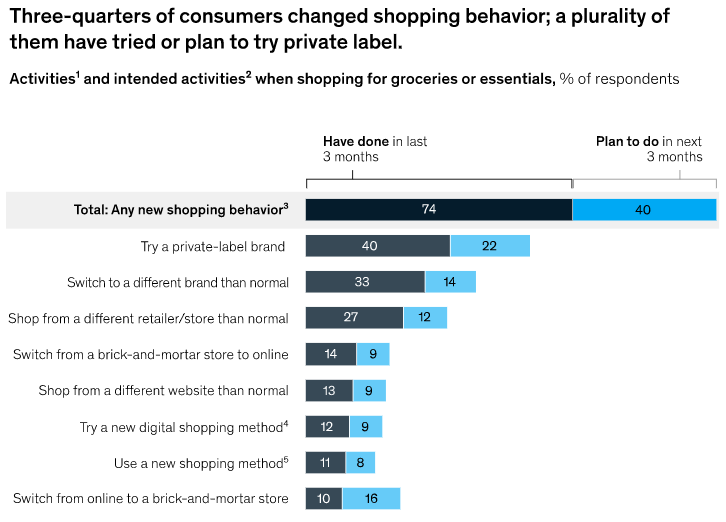As consumers globally trade down, where’s spend going? | WARC | The Feed
The Feed
Read daily effectiveness insights and the latest marketing news, curated by WARC’s editors.
You didn’t return any results. Please clear your filters.

As consumers globally trade down, where’s spend going?
Globally, people are buying less, or less frequently, and shifting their expenditure patterns in the face of rising inflation; new research from management consultancy McKinsey, among others, indicates where that spend is going.
Why it matters
Across the world, predicted trade-downs are beginning to occur as inflation bites. New research is starting to uncover exactly how consumer behaviour is changing, creating a major opportunity for new brands and a threat to existing brands – though both should be aware of the rise of private label, too.
While a lot of the pricing advice leans on brand propositions and technological fixes, the bottom line (ironically) is that price-gouging should be avoided for long-term benefit, with brands instead working closely with retailers to provide better value for consumers and exploring customer-centric examples from around the world.
A shift in spending
A telling chart (credit here to Accenture Song’s Shane O’Leary, who drew our attention to it) from McKinsey reflects the attitudes of 1,000 respondents from five major European economies:
- A staggering 93% have felt price rises for commonly-purchased goods.
- Rising prices are a concern for 53% of people across the continent (the UK leads here, with 67% of respondents concerned about this issue).
- “69 percent of shoppers chose a lower-cost or private-label brand in April; this figure has now risen to 73 percent,” the report states.
Where's the money going?
- Effectively, people are putting their long-term financial health on ice as savings take a far bigger hit than non-food discretionary spending.
- The latter has seen a net expenditure change of just –2 in the face of huge rises for energy (+49), transport and gasoline (+41) and food (+41).
- Savings are the component of people’s finances that lose out as a result, with a drop of –40.
Around the world
- The lipstick effect, which argues that consumers often spend on smaller luxuries and indulgences in periods of economic stress, is a well-known piece of economic lore. But it doesn’t necessarily apply to branded lipstick.
- In the US, Marketing Brew highlights the example of cosmetics retailers like e.l.f. Cosmetics, where private-label products boosted the firm’s revenues beyond forecasts as a result of consumers trading down from higher-priced branded options.
- In Asia, inflation is also squeezing wallets across the region, meaning essential categories are likely to be bought in either smaller quantities or less frequently. However, the tilt towards private label appears slightly less prevalent, according to an Asia-focused McKinsey study, even if value is the key driver for consumers trying a new brand.
Sourced from McKinsey, WARC, Marketing Brew, Straits Times
Email this content
